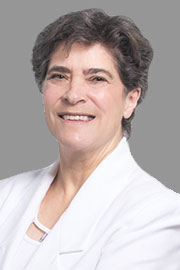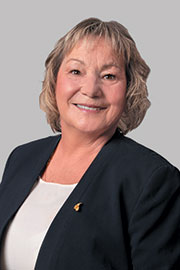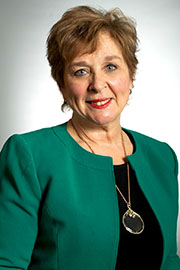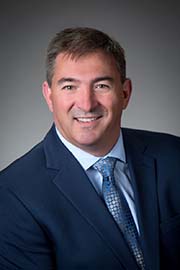- May/10/23 9:00:00 a.m.
I’m pleased to be able to lead off debate today on this. At the outset, let me just take a moment to thank my parliamentary assistant, the member for Kitchener–Conestoga, and the Chair of the Standing Committee on Procedure and House Affairs, the member for Oshawa, for the tremendous work that they’ve both done in helping guide us here today, as well as the members of the standing committee, who have done a tremendous amount of work in helping, as I said, guide us to where we are today on the bill which we are on third reading of.
Just as a quick overview, Mr. Speaker, as you know—I’ll let others talk about the building and why we’re doing this—the bill itself just establishes the framework by which we will begin the process of restoring the Legislative Assembly. It will obviously necessitate a decanting of this building, finding another location for the Legislative Assembly to temporarily do its business before we’re able to come back into the building at the conclusion of that.
What the bill does: It does establish a secretariat which in itself will help oversee the reconstruction of the building. What that does, by establishing a separate secretariat, is ensure that the accountability mechanisms that are required through government—through estimates, through budgeting—are of primary concern when it comes to the financial outlay, and that parliamentary oversight of the project, parliamentary oversight of parliamentarians—what happens to this building rests with the members of provincial Parliament.
It is an exciting project in the sense that, as was raised by many of the committee members, frankly, this is a project we are undertaking that—probably most of us will never sit in this chamber after we vacate the chamber; well, maybe a couple. I have never been that lucky to be loved in opposition, Mr. Speaker, so I tend to ride away. But that is the good part of what we are doing here.
It also, I think, reflects the growing importance of the work that the members of provincial Parliament do, which was really highlighted—it’s been highlighted ever since the place opened and since Ontario’s first Parliament sat. Certainly, during COVID we were able to see some of the restrictions and impediments that not having made changes or upgrades to the place—the position that it put us in in trying to communicate, often, with people. Mr. Speaker, that’s why we’re very, very excited to be here.
As I say, the committee has done a tremendous amount of work, both in ensuring that it is a depoliticized process and that members put first and foremost their needs, the needs of the people who work here, and the future needs of parliamentarians who will be sitting in here, reflective of the fact that Ontario is a very large trillion-dollar economy and it is the fifth-largest government in North America. If it was a country, it would be a G20 country all on its own. This institution needs to reflect the growing and continued importance of the province of Ontario, not only, frankly, in national affairs but also in global affairs, in the sense that we are an economic powerhouse and the work that needs to be done by all members on all sides of the House needs to be done in a way that they can undertake their roles.
It also needs to reflect, Mr. Speaker, the abilities of Canadians and Ontarians to actually come to this place. We know full well the challenges that many Ontarians face in accessing this place. We will be able to undertake all of that in the project in the coming years ahead.
I didn’t want to speak too long, but before I conclude, I just wanted to highlight that the bill does come back virtually the same as at second reading, but there were a couple of important changes led, again, by the committee in helping us improve the bill. The first one I wanted to speak of was just some clarity in the Freedom of Information and Protection of Privacy Act. It was highlighted through the committee process that the original bill left open for interpretation what documents would be protected and which ones wouldn’t be. To avoid those types of misunderstandings or debate over what would be protected and what wouldn’t be protected, the committee came with amendments that would clarify that, at the same time as protecting the authorities of the House. Members will see that reflected in the copy that’s in front of them.
The other thing, Mr. Speaker—again, I thank members of the committee for their help on this—it does also include changes to legislative protective services. Again, members will see some of the changes in that, reflecting the fact that we are, of course, eventually going to be decanting. We will have a much wider parliamentary precinct. We will have, potentially, a precinct that is over a number of places. Offices could be different than the chamber; we don’t, obviously, know. Our legislative protective services, although they continuously currently are being asked to do more and more, just given the increasing amount of threats that all parliamentarians face and the assemblies across the country face—but, in addition, Speaker, the reality of what will be a decant and trying to protect parliamentarians and the people who work in Parliament over multiple locations could not be done, in our estimation and the committee’s estimation, with the current rules under which the legislative protective services operates, so you’ll see that the bill does ultimately allow certain members of the LPS to act as peace officers, frankly, across the province of Ontario, and a number of other important upgrades to the already fine work that the LPS is doing for us.
Ultimately, those are the two big changes in this. Again, I thank the committee members for their work on this. I thank them in advance for what will be a very long, difficult and challenging process. I think they’ve seen that reflected in the meetings that they have had already, not only with other jurisdictions that are doing changes but over the complexity of some of the issues that we will, as parliamentarians, be asking them to reflect on over the next number of years.
Ultimately, Mr. Speaker, just to say that I’m very excited by the opportunity that this affords us, very excited by the ability for us to truly make this place accessible to all Ontarians, excited by the opportunity that this gives us to allow parliamentarians to do their jobs better and more effectively—the work that we can do not only with the legislative protective services but with the employees through the Clerk’s department to make sure that the work that is done here, Ontarians can truly appreciate and access.
But also, it gives us such an opportunity to showcase this place not only as the main working place where rules and laws are debated and brought forward but also a place where we can potentially celebrate the works and the treasures that we have. The Minister of Tourism, Culture and Sport often talks to me about the amount of treasures that we have sitting in archives across our various museums. This is a place that we can think about bringing those here as well.
It really does give us an incredible opportunity. Again, just to conclude, I thank all of the members for their incredible work on bringing this bill back in a better form than it left after second reading.
- Hear!
- Rabble!
- May/10/23 3:50:00 p.m.
I thank the member for his presentation. This building has not been welcoming to some groups through its history, and many recognize the foundational colonial and paternalistic history of this place. I’m wondering what ideas the member would suggest for ensuring a more equitable space, working towards a Legislative Building that would be experienced more positively in the future.
- Hear!
- Rabble!
- May/10/23 3:50:00 p.m.
Thank you to the member opposite here for actually starting off with a little bit of history with the Toronto Maple Leafs. There might be a little history tonight with people picking up their lawn chairs and taking them home off the parade route. I’m a Boston fan, right?
However, this building has tremendous history, as well, as you have eloquently said. But hopefully we see a bright future for this building. How does the member think we can protect heritage aspects of this building while involving new ideas and telling the stories for future generations, like my grandchildren, that might come here and enjoy the structure of this historical building?
- Hear!
- Rabble!
- May/10/23 3:50:00 p.m.
Thank you to the member opposite. I was listening to his speech, which I enjoyed very much. All of us are delighted to work in this very beautiful building, but we all know that it has taken many years for it to reach the state that it currently has. I just wanted to ask the member about his experiences with this place and whether he could share some of that with us, because I think it’s important that people understand in this debate what we’re actually talking about in our day-to-day experiences here.
- Hear!
- Rabble!
- May/10/23 3:50:00 p.m.
I think that’s a great question, but I don’t think I’m the person to answer that question, actually, because if there’s one thing I’ve learned in working with Indigenous people, it’s the idea of the two-row wampum, for those who know what it is—the Hiawatha Belt, as it’s also called. It was actually made with Dutch settlers to New York 400 years ago. It was the idea of two nations walking side by side in perpetuity without mixing each other up.
We have spent hundreds of years destroying that belt, tearing it to pieces and scattering those beads all over the place. But with a project like this, I believe we have an opportunity to knit those pieces back together. We owe that to the people who were here before us. I really look forward to hearing the input on how this could be a place that Indigenous people could also call home.
The building systems are at end of life. The fact that there’s things posted all around the building: “Don’t drink the water because there’s lead in the pipes.” I think we should be something that should be a place for all Ontarians and that actually shows something that is good and top of the line for every single person, too.
And then just the spaces that we have—they’re all so different. We need something that’s equal for everyone who’s here. I’ll end there for now.
I don’t know. I walk through here and I look at everything. I had the cadets in here earlier today and I said, “Have a good look around, because if this piece of legislation passes, this building will be closed for the next 10 years.” And I wonder how many of us will still be here when it’s done. I hope we can all come back and see each other again.
But I think we have the know-how in Ontario in order to be able to be realistic and to preserve the pieces that are very, very important. But even more than that, I envision what could be new that brings other people together into this building. I think it’s very, very important. We have a unique opportunity to build a space where my colleague from Kiiwetinoong wouldn’t feel like he’s walking into something that was built by people that oppressed his people, but a place that also belongs to him.
- Hear!
- Rabble!
- May/10/23 4:00:00 p.m.
I’d like to thank the member from Brantford–Brant for his comments and his discussion about the history behind this building. As we look around, everything that is within here has been created by artisans, has been created with a tremendous amount of craftsmanship. It has been created with meaning, with purpose, and it has also significance.
I wanted to ask, though, with this tremendous history that our building has, how does the member think we can protect the heritage aspects of this building while also incorporating new ideas and telling the stories of future generations?
- Hear!
- Rabble!
- May/10/23 4:30:00 p.m.
I’m interested to know a little bit about the logistics. It’s an enormous amount of work to plan the future of this building but also an enormous amount of work to plan where we’re going to be in the interim. I’m wondering about where advice will be coming from in terms of the accessibility of both spaces.
I think of how often it happens that a space is not accessible because the right people weren’t asked; they weren’t part of the conversation. I’m thinking of AMO in Ottawa in the fall. When the escalators weren’t working, you couldn’t actually get to the fourth floor. I wonder if you could speak to that.
- Hear!
- Rabble!
- May/10/23 4:30:00 p.m.
To the member from Oshawa: The building was first opened in 1893. It has served the people of Ontario very, very well. But one of the things that we see in it—and I know it has been talked about already and some questions asked about it already—is when you look at the grandeur of this building, when you look at the style of everything, no one in 1893 took into consideration that there may need to be accommodations made for different people, whether it’s mobility challenges, whether it is audio, whether they have challenges with their eyesight. None of that was thought of in 1893 because that’s not what the world was thinking of.
Has thought been given to making changes so that we are accommodating a lot of other things that weren’t considered in 1893?
- Hear!
- Rabble!
- May/10/23 4:50:00 p.m.
To the member from Etobicoke–Lakeshore: As you spoke, you spoke about how mystical this place is, how magical it is. I often FaceTime my granddaughters in Halifax and say, “Grammy is at her castle again.” When you talked about the gargoyles outside and the history that’s in this building, you made it sound so wonderful—which it is.
Right outside my office on the third floor is that wonderful, large stained-glass window. When the sun came in today, it just made me feel just as proud as you and every member in this place that we do have a seat here. We are privileged to be here to serve the people in our ridings.
Now this building, as I said, has tremendous history, and the future of the Queen’s Park restoration and renovation is a perfect opportunity to be able to do it right. What are some of the things that you think the committee might be able to join together and express how we can keep some of the history here for the future?
- Hear!
- Rabble!
- May/10/23 5:00:00 p.m.
Thank you, Speaker, and thank you to the member for Etobicoke–Lakeshore for her remarks. I enjoyed listening to stories about your family and stories about when you worked here in the 1990s, and I’m just wondering if you might take a moment or two and tell us about some of the changes you’ve seen in the building since the 1990s and if they’ve been effective.
- Hear!
- Rabble!
- May/10/23 5:50:00 p.m.
It adds more than flavour to it, that’s for sure.
The standard now is ABS pipe for waste water. What we have here is cast iron, and it’s wrapped with horsehair. When the cast iron breaks, obviously the horsehair gets all wet as well, and it causes a real problem cleaning it up, but it’s in places now where you can’t even get to it.
One of the good parts I’ll say about the age of the building is, we didn’t use asbestos in 1893, so they’re probably not going to find a lot of asbestos when they tear this down, but we don’t know. That’s why it’s going to take close to 10 years for this building to be decanted and then rebuilt. There are so many unknowns when they start taking down the walls, and they have to do it in a way that is going to preserve some of the fantastic, historical artwork that is here.
But it’s not just the physical aspects of the building. There are other things that this building can be used for to represent all of Ontario.
At one of the committee meetings, there was a discussion around art and what art should be here and what should be displayed and what art perhaps shouldn’t be displayed. As the member from Oshawa talked about, there’s some very dark art that’s here. She has said to me a couple of times that one of the pieces of art right beside the member from Sudbury’s office—it’s called The Foreclosure, and you have a farmer who is lying on his deathbed with his family around, and you have the banker foreclosing on the farm because the farmer is too sick to continue on. That is a piece of art that we have here. It’s worth keeping—it’s worth reminding ourselves, because those who don’t learn from history are destined to repeat it.
So, as we put this back together, we have to make sure that we’re putting in all of those things that remind us not only of the good things that have happened in Ontario, but also some of those dark things that have happened in Ontario. As legislators, one of our jobs is to improve the lives of the people we represent, and the only way we can be assured that we are doing those things is by thinking of and recognizing the mistakes that had been made in the past and not repeating those mistakes. So it’s very, very important that as we put the building back together, we’re putting in those types of things that do remind us of not only the good things that have happened in Ontario, but also some of the darker history in Ontario.
Decisions are going to have to be made on all of that, and the only way that we can make that decision appropriately is to make sure that we have the appropriate feedback from everybody.
I did love the one comment that was made by the Minister of Northern Development and Minister of Indigenous Affairs about the possibility of travelling the Legislature, and what I’ll point out is that, in British Columbia, I had the opportunity to go to the BC Legislature, and they actually did that for the 100-year anniversary. They went back to the original city that served as the capital city and they turned the hockey rink into the Legislature for seven days. So it’s been done before in Canada. That would be a great opportunity for us to take, and I would love, more than anything else, to use the 900,000 square feet of GE in Peterborough and bring the Legislature to Peterborough for a week.
If you recall, when the Seven Grandfather Teachings was put up, there was a smudging ceremony that went on. I would love to see something like that at the beginning of each of our sessions, having a smudging ceremony, because it’s cleansing your mind, your eyes, your ears, your nose, your mouth and your heart. If we were to do something like that to incorporate some of those traditions—not just the physical part of it, but actually some of the things that are done as a ceremony for different reasons by different groups across Ontario. I’d love to see something like that incorporated in what we do.
There are different technologies that we have today that can be incorporated into the building of the building of this building—say “building” three times—that allows for flexibility in the future because it’s easy to remove and put back and no one would know that it had been removed. Having that type of flexibility I think is something we should be looking at.
- Hear!
- Rabble!









